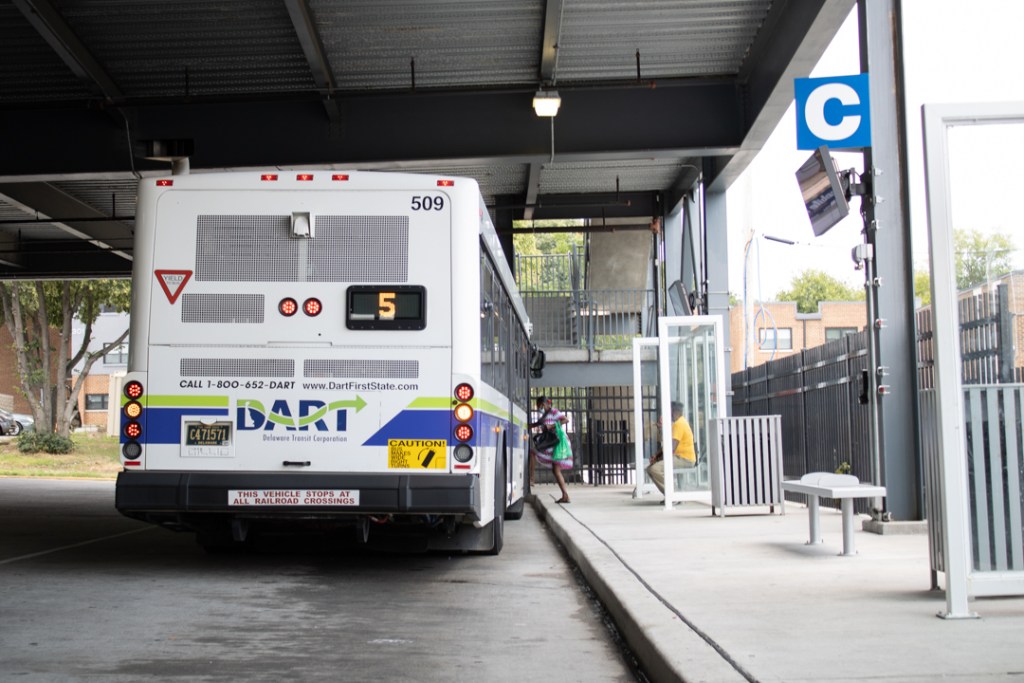How would you direct funding for public transportation? That was the question representatives from DART First State put forth during a community workshop at Wilmington Public Library last September, as part of DART Reimagined. Would they rather have more mid-day and weekend service? Earlier or later service? Or more frequent service?
“We tried to present things in a trade-off scenario, because we try to be all things to all people, but at some point there’s a trade-off, because we have a certain number of operators who operate those buses. We have a finite budget,” said Cathy Smith, a planning manager with DART.
DART Reimagined is a year-long, statewide transit study that aims to reconfigure the bus network and provide a more sustainable and equitable statewide transit system. Gathering such input helped identify pressing issues related to the transit service and prioritize what the community wants, Smith said.
Reliable transportation is a Vital Condition for Health & Well-Being, recognized by Healthy Communities Delaware (HCD) as necessary for thriving neighborhoods, for access to jobs, health care and social activities. The Vital Conditions for Health & Well-Being Framework is used throughout the state to support resident-led work to create communities of opportunity.
In Wilmington and New Castle County, suburban sprawl limits accessibility without private car ownership, and even along business corridors like U.S. Route 40, connecting to nearby destinations via public transportation can be challenging due to the dispersed layout. A Wilmington Area Planning Council survey conducted in 2018 and again in 2022, found that 47% of individuals earning under $25,000 annually encountered difficulties reaching essential activities, such as going to grocery stores, jobs, or social services.
Shyanne Miller, a local advocate who moderated the transportation panel during HCD’s Equity Action Summit in April, said personal need should outweigh sheer numbers in determining these essential amenities. Statistics don’t matter when it’s your grandmother coping with a lack of shelter, or when your own commute got longer because of a new route.
“People don’t want rerouted buses. They want a second route or third route added to be able to get to their location,” Miller said, recalling feedback she has heard from Wilmington residents.
Early in his career, WILMAPCO transportation planner Bill Swiatek saw planners often create community plans with minimal input. Now, there is an increased focus on involving the community throughout the planning process and establishing committees to guide and sustain the implementation phase, ensuring the plan remains active and effective.
The importance of community involvement in planning became clear while working on bus access in Wilmington’s Southbridge neighborhood. Despite having three bus lines – making its service better than most communities – surveys showed residents still wanted better access, particularly to reach the grocery store and other destinations conveniently. Recommendations included improving service to the grocery store and rerouting some buses through the community for better accessibility.
In a thriving community, all modes of transportation are accessible, Swiatek said. Lower-income and minority communities often rely on walking, and biking is emerging as an alternative in our region. Supporting these modes provides essential alternatives to private car ownership, which is often problematic for lower-income families.
A multi-park trailway along the Route 9 corridor is an example of this, Swiatek said. The county’s policy initially opposed lighting the trail, but since people use it to commute from the bus stop to their homes, it’s crucial to ensure the trail is well-lit, especially during early darkness in certain times of the year.
In urban areas like Wilmington, it’s vital to connect communities safely with proper lighting and well-maintained sidewalks. Yet it’s not uncommon to find tree lines separating communities from bus stops, forcing roundabout routes to access public transit. Bringing attention to such issues can lead to change.
“It’s all about designing connections that don’t exist today. A lot of neighborhoods are right next to each other, but there’s no formal way to safely get to them,” Swiatek said.
The post Addressing transportation inequities in Wilmington appeared first on Spotlight Delaware.

